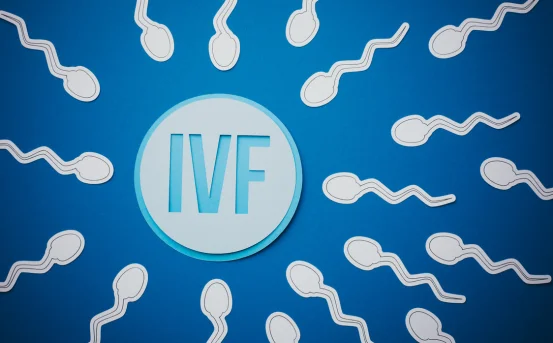Introduction
Cardiac Resynchronization Therapy (CRT), also known as Cardiac Resynchronization therapy, is a specialized treatment designed for patients suffering from moderate to severe heart failure, particularly when the electrical impulses of the heart are uncoordinated. This lack of synchronization causes the ventricles to beat out of sync, reducing the heart’s efficiency in pumping blood. CRT uses a surgically implanted device (similar to a pacemaker) to correct the electrical timing of the heart’s contractions, especially between the left and right ventricles.
The Cardiac Resynchronization therapy has become an essential option for patients with heart failure who do not respond adequately to medication. Over the past two decades, multiple clinical trials and studies have shown that CRT not only improves symptoms but also extends survival and enhances overall quality of life.
Benefits of Cardiac Resynchronization Therapy
- Improved Heart Pumping Efficiency
The most significant benefit of CRT is the restoration of coordinated contractions in the ventricles, especially the left ventricle. When both chambers beat in harmony, the heart can pump more blood with each contraction. This improved efficiency means that more oxygen and nutrients are delivered to the body’s organs and tissues, relieving strain on the heart and reducing the symptoms associated with poor circulation. - Relief from Shortness of Breath
Shortness of breath is a hallmark symptom of heart failure. It occurs when the heart cannot keep up with the body’s demands, causing fluid buildup in the lungs. CRT helps improve cardiac output and prevents fluid accumulation, leading to a noticeable reduction in breathlessness. Many patients report being able to climb stairs, walk, or perform daily activities that were previously too exhausting. - Increased Energy and Reduced Fatigue
As the heart begins to function more efficiently after CRT, the oxygen-rich blood supply to muscles and vital organs improves. This leads to reduced fatigue and an increase in stamina. Individuals who were once confined to their homes due to extreme tiredness often regain the strength to return to daily routines and even light physical activity. - Fewer Hospitalizations
Patients with poorly managed heart failure often experience frequent hospital admissions due to fluid overload, arrhythmias, or worsening symptoms. CRT significantly reduces the risk of decompensation, which translates into fewer emergency room visits and hospital stays. This not only improves the patient’s quality of life but also reduces the financial burden associated with chronic care. - Reduction in Heart Size and Reversal of Remodeling
Chronic heart failure can cause the heart particularly the left ventricle to enlarge or remodel as it tries to compensate for poor function. This structural change makes the heart weaker over time. Studies have shown that CRT can reverse this remodeling process. The heart returns closer to its normal size and shape, which improves its ability to pump blood and enhances long-term outcomes. - Improved Survival and Life Expectancy
Cardiac Resynchronization Surgery is associated with a significant improvement in survival rates for heart failure patients. Clinical trials such as the COMPANION and CARE-HF studies have demonstrated that CRT reduces all-cause mortality when combined with optimal medical therapy. In patients with severely reduced ejection fraction and electrical dyssynchrony, CRT-D (which includes a defibrillator) is especially beneficial in preventing sudden cardiac death. - Better Quality of Life
CRT not only improves the physical symptoms of heart failure but also enhances emotional well-being. Patients experience fewer limitations in daily life, improved sleep quality, and greater independence. The psychological stress and anxiety associated with living with heart failure are reduced. For many, this improvement in lifestyle is just as meaningful as the physical health benefits. - Prevention of Sudden Cardiac Arrest (with CRT-D)
For patients at risk of lethal arrhythmias, CRT-D offers the added benefit of an implantable defibrillator that monitors heart rhythms continuously. If a life-threatening ventricular arrhythmia occurs, the device delivers a shock to restore normal rhythm. This function can be lifesaving in individuals with a high risk of sudden cardiac death due to their underlying heart condition. - Compatible with Other Heart Failure Treatments
CRT works well in conjunction with standard heart failure medications such as ACE inhibitors, beta-blockers, and diuretics. In fact, its effectiveness is maximized when used alongside these therapies. The combined approach helps optimize fluid balance, improve heart function, and reduce symptoms more effectively than medications alone. - Minimally Invasive and Low-Risk Procedure
While cardiac surgery may sound daunting, CRT implantation is relatively low risk and minimally invasive. The device is implanted under local anesthesia with sedation, typically requiring a short hospital stay. Most patients are discharged within 24 to 48 hours and resume normal activities within a few days. The recovery process is smooth, and complications are rare when performed by experienced cardiologists. - Customizable and Programmable Therapy
The CRT device can be tailored to each patient’s needs. After implantation, cardiologists fine-tune the settings during follow-up visits to ensure optimal synchronization and battery performance. Modern CRT devices also come with remote monitoring capabilities, allowing doctors to track heart function and detect any issues before they become serious.
Conclusion
Cardiac Resynchronization therapy has transformed the way heart failure is managed, especially for patients with electrical conduction abnormalities and reduced ejection fraction. By restoring the coordinated contraction of the heart’s chambers, CRT not only improves the heart’s efficiency but also alleviates symptoms, prevents complications, and extends life.
The benefits of CRT go beyond symptom control they include fewer hospitalizations, improved survival, and a better overall quality of life. It is a therapy that empowers patients to regain control over their health and daily function, providing relief when medications alone are no longer sufficient.
For individuals struggling with progressive heart failure, especially those who continue to experience fatigue, breathlessness, and reduced mobility despite medical therapy, Cardiac Resynchronization Surgery offers renewed hope. If you or a loved one is a candidate for CRT, timely consultation with a heart specialist can lead to a brighter, healthier future.























